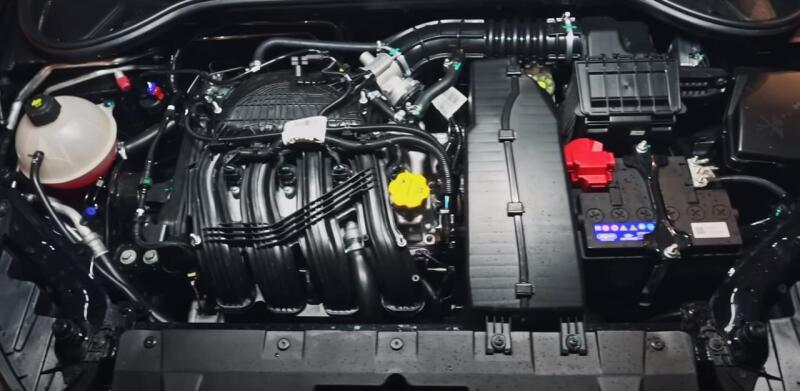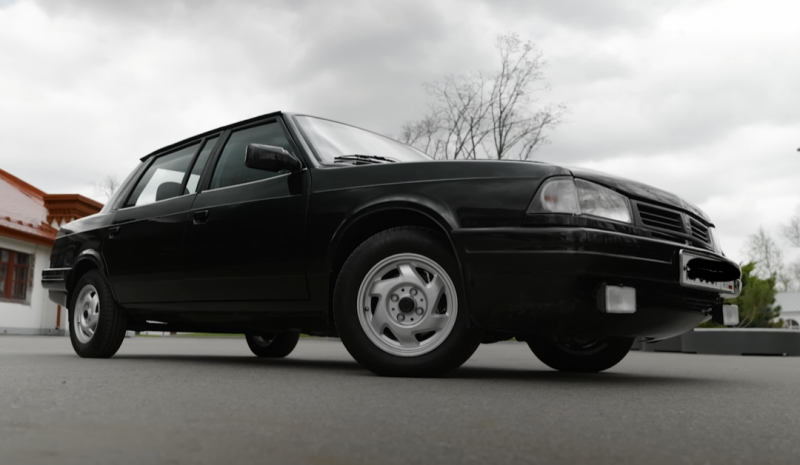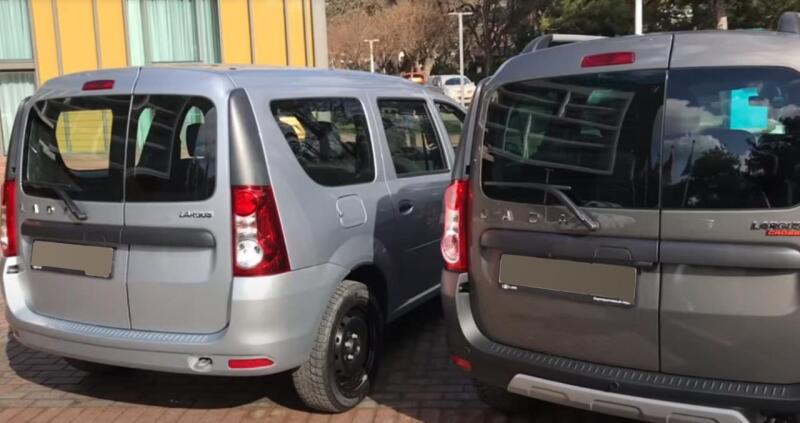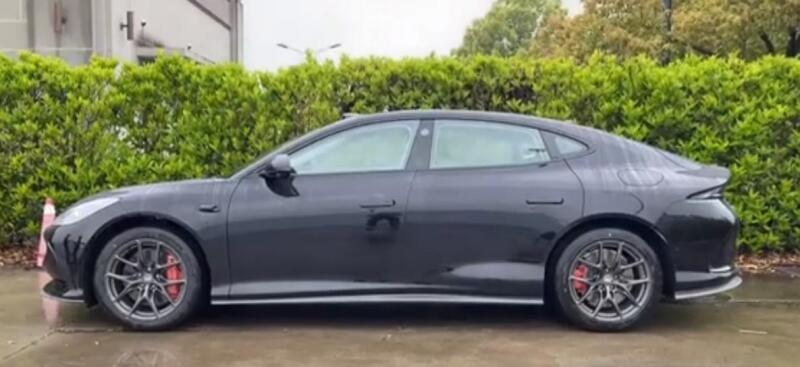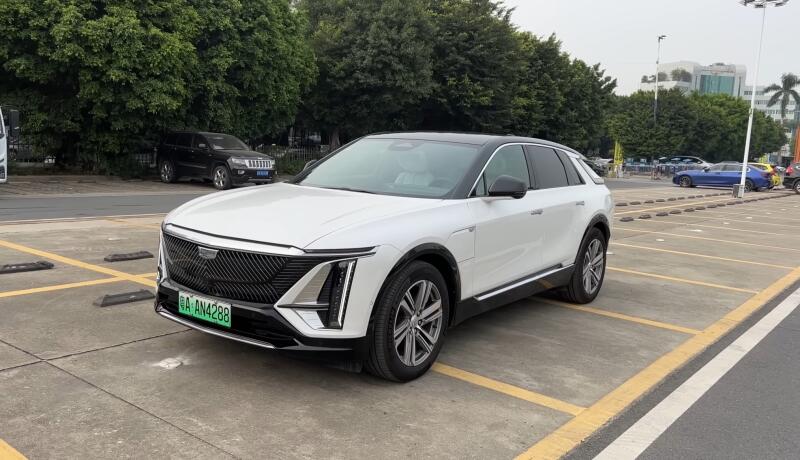The main thing is that there is no need to create a new infrastructure when the old one is destroyed. It costs a lot of money: for example, the construction of one charging station is comparable to the cost of an autonomous trolleybus. And indeed: why build an EZS when the energy in the batteries can be replenished through the contact network “for free”? The second plus is that there is no need to retrain drivers, and the third is that the price of electric buses is higher.
Trolleybuses that run without "horns"
Such were a quarter of a century ago: in 1998, Belkommunmash produced the AKSM-333 model, equipped with a 48 kW diesel generator set.
 One of the first autonomous operating trolleybuses - AKSM-333. Photo: YouTube.com
One of the first autonomous operating trolleybuses - AKSM-333. Photo: YouTube.comHowever, the purpose of installing this installation was not at all to transport passengers without being tied to a contact network. The internal combustion engine, which accelerated the car only to 20 km / h, made it possible to get to the depot, and even then in an empty form.
MAZ-103T
The model appeared in 1999 and was considered a real technological breakthrough for that time. The trolleybus could move autonomously using only battery power. Let it be a short distance, within the depot or control station. To increase the "mileage" then did not allow the lack of energy-intensive batteries.
 One of the later versions is MAZ-303T20. Photo: YouTube.com
One of the later versions is MAZ-303T20. Photo: YouTube.comToday, the car is on a "deserved rest" - in one of the Minsk museums.
33300А
Having released a “battery” model, the Belkommunmash plant faced a choice: autonomous trolleybuses are needed, but it is not practical to make them powered only by batteries: batteries with sufficient capacity began to appear in the 2010s. Therefore, in 2006, a car was released with a Kirsch diesel generator and a Skoda electric motor that produced 185 kW of power. The batteries were provided by the Experimental Machine Building Plant: the batteries were manufactured using space technologies. Nevertheless, the trolleybus developed a good speed for the city, 55 km / h.
 The model 33300A did not go into the series. Photo: YouTube.com
The model 33300A did not go into the series. Photo: YouTube.comThe installation occupied a decent area, forming a “table” in the rear of the cabin, however, on which passengers put their bags with pleasure. True, the muffler under the overhang of the trolleybus looked somehow strange. However, the car turned out to be expensive: it was not launched into mass production, leaving it in a single copy, which was called the “duobus”. Today he successfully works in Bobruisk.
Vitovt 420903A
The following year, 2007, a new model was released, equipped with Russian "space" batteries, capable of not only being charged from the contact network, but also accumulating energy through recuperation when the trolleybus is braking. As a result, he could move around using "horns" or batteries.
 In the depot - with lowered bars. Photo: YouTube.com
In the depot - with lowered bars. Photo: YouTube.comMoreover, in both versions, the dynamic parameters of the machine were the same. It seems to be not bad, but everything was spoiled by a single, but very significant minus. The energy reserve of the batteries was only enough for 5 km of the way. And this is very little: passengers were not carried on batteries.
32100А
The next model, designed in 2013-14, has already worked on real routes. But alas! A diesel generator was again installed on the car, which supplied the batteries with energy. It is interesting that this trolleybus was made under a certain line, on which there was a railway crossing, so it was not possible to lay a contact network.
 The trolleybus overcomes part of the route in a "contactless" way. Photo: YouTube.com
The trolleybus overcomes part of the route in a "contactless" way. Photo: YouTube.comThe construction of a "special" model in the future made it possible to create full-fledged electric trolleybuses.
MAZ-203T70
The first tests started at the beginning of 2020. The car was developed in a relatively short time due to the ability to purchase components from China. Their cost turned out to be at an acceptable level, in contrast to Western European components and parts. The new trolleybuses, recharged from the contact network, are able to cover up to 15 km offline. as soon as the batteries are charged to 100%, the “horns” must be lowered. When "wasting" 75% of the energy, the rods are reconnected to the contact network.
 MAZ-203T70 drives up to the stop with the "horns" lowered. Photo: YouTube.com
MAZ-203T70 drives up to the stop with the "horns" lowered. Photo: YouTube.comSuccessful tests allowed Minsktrans to buy 2020 vehicles in 70 and 2021 in 75. Now it is possible to extend trolleybus routes without equipping a contact network.
32100D "Olgerd"
Not lagging behind MAZ and Belkommunmash. His model, named after the Lithuanian prince who ruled in the Belarusian Vitebsk, was demonstrated in 2015. The first three pieces of equipment went to Ulyanovsk. The following year, the trolleybus was tested in St. Petersburg, then in Gomel, where it remained. In 2017, five copies "rolled" in Grodno. Convinced that it is profitable to operate the machines, new customers appeared.
 "Olgerd" is recharged from the contact network in St. Petersburg. Photo: YouTube.com
"Olgerd" is recharged from the contact network in St. Petersburg. Photo: YouTube.comToday the model works in St. Petersburg and Dushanbe. There are a couple of pieces in Nizhny Novgorod, 25 in Minsk (received in 2021). In May this year, Krasnodar acquired 20 Olgerds.
Lithium-iron-phosphate batteries are located behind a special partition at the rear of the trolleybus. Its total passenger capacity is 90 people, seating - 25, nine of which are on the low floor.
 And here the bars are down. Photo: YouTube.com
And here the bars are down. Photo: YouTube.comA little later, the cars intended for shipment to Bulgaria by order of the authorities of the city of Vratsa were slightly modernized. The maximum weight of the trolleybus was increased to 18,65 tons, thanks to the use of a more powerful front axle. As a result, the number of seats increased to 30.
New Vitovt 43300D
One of the latest developments. Curiously, it is a version of the Vitovt Max Electro electric bus. In 2021, this brainchild of BKM Holding became the leader in a competition involving the sale of 25 trolleybuses in Sarajevo. After the cars were tested on real routes, we decided to purchase 10 more pieces of equipment.
 Who said that a trolleybus is an outdated, ugly form of transport? Photo: YouTube.com
Who said that a trolleybus is an outdated, ugly form of transport? Photo: YouTube.comVitovt 43300D is an articulated trolleybus with batteries on the roof. After they are fully charged, the car is able to drive 20 km offline. The battery is replenished with energy while driving, from the contact network and you can reach 100% in half an hour. The total number of passengers is 130 people (as required by European standards), there are 37 seats.
 The driver's workplace is the most modern. Photo: YouTube.com
The driver's workplace is the most modern. Photo: YouTube.comThe cabin provides USB ports for charging gadgets, there are air conditioners, LED lighting, information LCD monitors, communication buttons with the driver.
So an electric bus or a self-driving trolleybus?
The latter has a serious disadvantage - the impossibility of "transferring" to another route, where there is no contact network. On the other hand, the electric bus is the most expensive type of public transport. Its price is 2 times more than that of a tram, and 3 times more than a bus. At the same time, the cost of the latter is comparable to one battery for an electric bus. Add here the need for downtime when charging, and this is at least half an hour. And do not forget about Russian winters: in the hold, the battery takes the charge worse and longer. Therefore, to keep the interval at stops the same, you will have to buy more cars and train the corresponding number of drivers. Further: the power reserve of the latest model of the Admiral 6281.01 trolleybus is already 30 km: an impressive figure!
 "Admiral" 6281.01 is produced in Engels by the company "Transport Systems". Photo: YouTube.com
"Admiral" 6281.01 is produced in Engels by the company "Transport Systems". Photo: YouTube.comSomeone will say: the electric bus is more maneuverable. And why do you need such quality for public transport moving along dedicated lanes? The general conclusion is unequivocal: trolleybuses “kill” in vain. Together with electric buses, they could coexist quite peacefully and complement each other.



